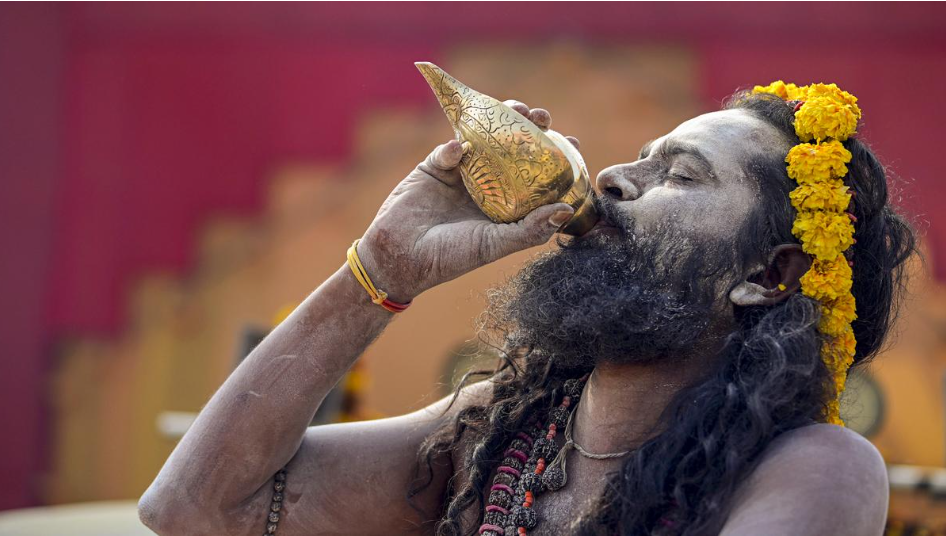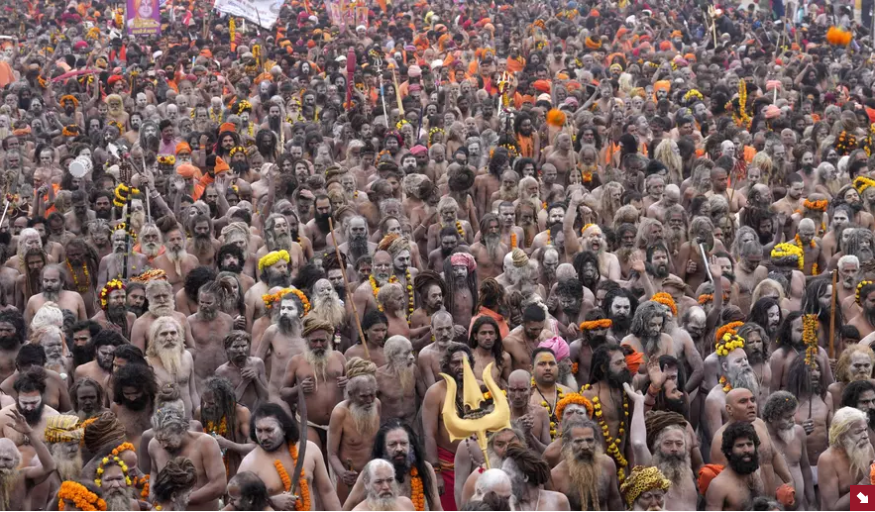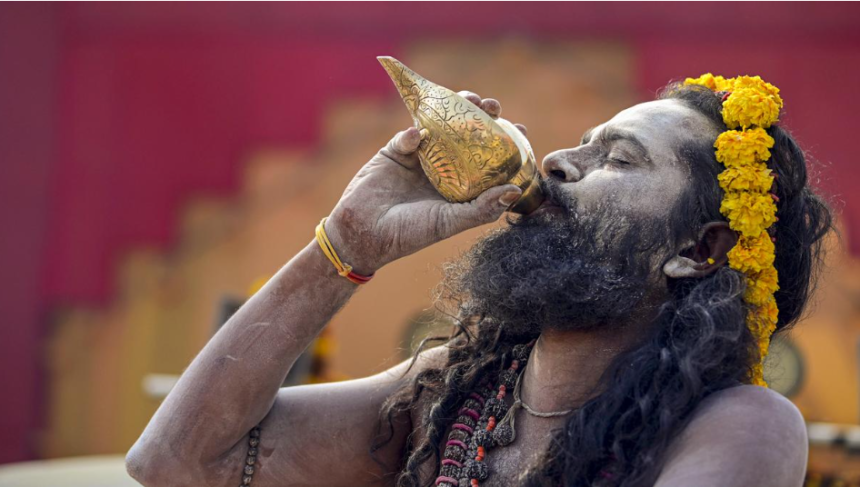The Maha Kumbh Mela, a once-in-12-years gathering that represents one of the largest spiritual events in the world, is set to return with unparalleled fervor and anticipation. Held along the sacred banks of the Ganga, Yamuna, and the mythical Saraswati Rivers, this year’s Maha Kumbh Mela is expected to host over 450 million pilgrims, a staggering figure that nearly doubles the population of Uttar Pradesh, India’s most populous state.
This 45-day long gathering draws millions of devotees, spiritual seekers, and cultural enthusiasts, including Hindu ascetics, saints, ash-smeared Naga Sadhus, skeleton-donning Aghoris, and other pilgrims from every corner of India and beyond. Celebrated not merely as a religious event but also as a cultural and social phenomenon, the Maha Kumbh stands as a powerful testament to India’s deep spiritual heritage and diverse cultural tapestry.
In this article, we delve into the historical significance of the Kumbh, its cultural and spiritual dimensions, preparations for this year’s event, and its impact on the economy and environment.
The Origins and Historical Significance
The Kumbh Mela has its roots in Hindu mythology, specifically the legend of the Samudra Manthan (Churning of the Ocean). According to Hindu scriptures, the gods (devas) and demons (asuras) churned the cosmic ocean in search of the nectar of immortality (Amrit). As the nectar was retrieved, it was carried in a kumbh (pitcher) by the celestial bird Garuda. During its journey, a few drops of the nectar spilled at four sacred locations—Prayagraj, Haridwar, Ujjain, and Nashik—making these sites eternally sacred.
The Maha Kumbh Mela, celebrated once every 12 years at Prayagraj (formerly Allahabad), holds special spiritual significance as it takes place at the confluence of three sacred rivers: the Ganga, Yamuna, and the mythical Saraswati, collectively referred to as the Triveni Sangam. Bathing at this holy confluence during the Kumbh is believed to cleanse one’s sins, liberate the soul, and pave the way to moksha (salvation).
Over centuries, the Maha Kumbh has grown from a regional pilgrimage to a global cultural event, attracting millions of participants irrespective of caste, creed, or nationality.  For the more information click on this link
For the more information click on this link
A Spiritual and Cultural Phenomenon
While the Maha Kumbh is rooted in spirituality, it also serves as a showcase of India’s diverse religious and cultural traditions, offering a confluence of beliefs, rituals, art, and philosophy.
1. Ash-Smeared Naga Sadhus and Other Mystical Ascetics
One of the most fascinating aspects of the Maha Kumbh Mela is the presence of Naga Sadhus—ascetics who renounce worldly life, smear themselves with ash, and wear no clothing, signifying their complete detachment from materialism. These sadhus often emerge from reclusive Himalayan monasteries to attend the Kumbh, offering a rare glimpse into their enigmatic lives.
Other ascetics, such as the Aghoris, who are known for their unconventional practices and deep meditations on death and life, also play a prominent role in the gathering. The sight of these mystics engaging in rituals, chanting mantras, and blessing pilgrims provides an aura of sacred mysticism to the event.
2. Cultural Programs and Heritage Exhibitions
The Kumbh is more than a religious gathering; it is also a celebration of Indian heritage and culture, featuring folk performances, storytelling sessions from Hindu epics like the Ramayana and Mahabharata, and classical dance and music programs.
Handicraft fairs, book exhibitions on spirituality, and workshops on yoga and meditation form an integral part of the Kumbh experience, enabling attendees to explore India’s rich cultural heritage alongside their spiritual journey.
This Year’s Maha Kumbh: Magnitude and Preparations
1. Expected Footfall
This year’s Maha Kumbh Mela at Prayagraj is anticipated to be the largest ever, with a footfall of 450 million pilgrims over the course of 45 days. This makes the event not only a monumental spiritual gathering but also one of the largest temporary human congregations in human history.
The auspicious bathing dates (Shahi Snans), when millions of devotees take a holy dip at the Triveni Sangam, are the focal point of the celebrations. On these days, the influx of devotees is expected to reach 20-30 million per day.
2. Infrastructure and Logistics
The Uttar Pradesh government has rolled out an ambitious plan to facilitate the movement, safety, and comfort of such a massive gathering of people.
Facilities for Pilgrims
- Over 25,000 hectares of land have been allocated for temporary camps, including accommodations, sanitation facilities, and drinking water supply.
- Special bathing ghats have been constructed to accommodate the surging crowds during peak days.
- Medical teams, mobile hospitals, and rapid action response units have been deployed to ensure public safety.
Technology and Smart Management
This year’s Kumbh is being managed using cutting-edge technology tools, including:
- Drones and CCTV cameras to monitor crowds and enhance security.
- A Kumbh Mela App, providing real-time updates on transportation, lodging, and bathing schedules.
- AI-based crowd management systems to prevent overcrowding and ensure a smooth flow of pilgrims.
Transportation and Connectivity
- Enhanced train and bus services are being deployed, with dedicated Kumbh trains and buses connecting major cities across India.
- Prayagraj’s airport and railway station have been upgraded to accommodate the massive influx of travelers.
Economic Impact
The Maha Kumbh Mela is not only a spiritual phenomenon but also an economic powerhouse. The influx of millions of pilgrims has a transformative impact on the local economy, driving revenue across multiple sectors.
1. Tourism Boom
The event attracts not only Indian pilgrims but also foreign tourists eager to witness the cultural spectacle. Hotels, guesthouses, and local vendors see a sharp surge in demand, contributing significantly to the region’s tourism revenue.
2. Job Creation
The preparation and execution of the Kumbh Mela create jobs for thousands of people, from construction workers building ghats and accommodations to cooks, cleaners, and security personnel. Local artisans and shopkeepers also benefit from the demand for religious artifacts, handicrafts, and other souvenirs.
3. Spiritual Economy
Religious organizations and ashrams set up massive food camps (langars) and provide free services to pilgrims, funded by donations from devotees. This generosity fosters a unique, self-sustaining ecosystem during the Kumbh.
A 2019 Kumbh Mela impact study estimated that the event generated nearly $2.5 billion (₹12,000 crores) in revenue, with this year’s Maha Kumbh expected to surpass those figures.
Environmental Concerns
Despite its spiritual significance, the Kumbh Mela poses environmental challenges, particularly in managing the waste and pollution generated by millions of participants.
1. River Pollution
Mass bathing, the immersion of idols and offerings, and large-scale food distribution often lead to the pollution of the sacred rivers. This year, extensive efforts are being made to mitigate pollution:
- Eco-friendly ghats have been constructed to ensure that waste is minimized during bathing.
- Effluent treatment plants have been installed to prevent untreated waste from entering the rivers.
2. Waste Management
- Biodegradable waste disposal systems are being set up, and pilgrims are being encouraged to use compostable utensils.
- Dedicated waste collection and recycling units are in place to manage the massive amounts of garbage generated during the event.
3. Awareness Campaigns
Environmental activists and spiritual leaders have launched campaigns urging pilgrims to keep the rivers clean. The government has also introduced fines for littering and non-compliance with eco-friendly measures.
Global Attention
The Maha Kumbh Mela has increasingly garnered global recognition, earning a place on UNESCO’s Representative List of Intangible Cultural Heritage in 2017. International media, academics, and tourists now consider the Kumbh a unique opportunity to experience India’s cultural, religious, and social fabric.
Foreign visitors often describe the Kumbh as a life-changing experience, drawn to the atmosphere of faith, devotion, and human interconnectedness. Scholars and filmmakers flock to the event, documenting its vibrant colors, deeply symbolic rituals, and human stories of devotion.  For the more information click on this link
For the more information click on this link
Spiritual Reflections and Unity
At its core, the Maha Kumbh represents a celebration of the universal human desire for transcendence, connection, and meaning. It is a reminder of humanity’s shared spiritual heritage, bringing people from all walks of life together in an unparalleled expression of faith.
The event fosters unity and inclusivity, breaking down barriers of caste, class, language, and geography. Rich and poor, young and old, urban and rural—all converge on the sacred sands of Prayagraj to share in a collective spiritual journey.
Conclusion
The Maha Kumbh Mela, with its unparalleled scale and significance, is much more than a religious festival—it is a cultural and economic marvel, a testament to human resilience, and an enduring symbol of India’s spiritual richness.
As millions of pilgrims immerse themselves in the sacred waters of the Triveni Sangam, they remind us of the timeless truths that have shaped humanity for generations. The Maha Kumbh Mela is not just a gathering of faith but a living heritage that celebrates the convergence of spirituality, culture, and community.
For those who witness it, the Kumbh Mela is not simply an event to observe but an experience that resonates deeply with the soul, leaving an indelible mark on anyone who participates in this awe-inspiring confluence of faith and culture. ALSO READ:- India and Indian States Hog Limelight Ahead of World Economic Forum Meet 2025





